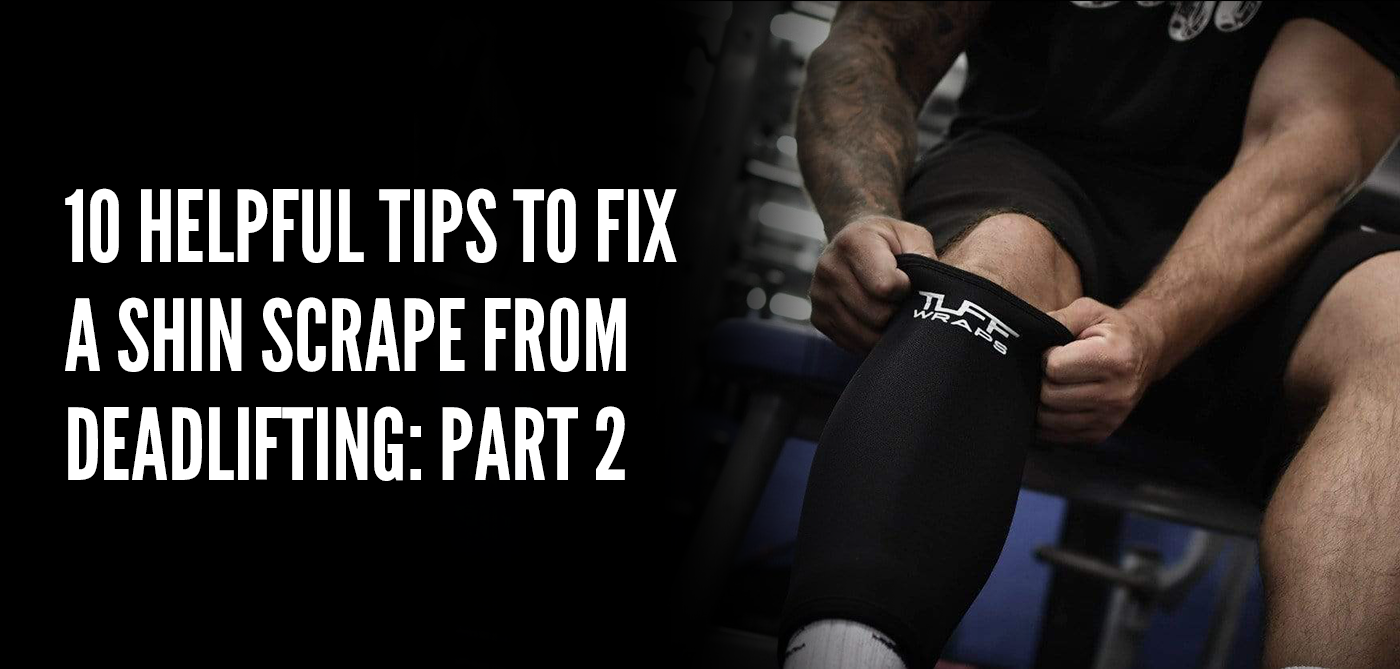Shin scrapes are common injuries when the barbell rubs against the shins during deadlifts, resulting in painful abrasions. Part 1 of this article discussed the initial steps to take when dealing with a shin scrape, such as cleaning the wound and stopping the bleeding.
In part 2, we will explore additional tips to fix a shin scrape from deadlifting, such as covering the wound, wearing long socks or shin guards, using proper form, and using natural remedies.
1. Keep the Wound Clean
Keeping the wound clean is one of the most important things you can do to fix a shin scrape from deadlifting. Regularly clean the wound with soap and water to remove dirt and bacteria. Use a gentle, non-alcohol-based cleanser and avoid scrubbing the wound too hard.
Gently pat the wound dry with a clean cloth or gauze. Consider using a saline solution to clean the wound, as it can help reduce inflammation and promote healing.
2. Apply Antibiotic Ointment
Applying an antibiotic ointment can help prevent infection and promote healing. Look for an over-the-counter antibiotic ointment that contains bacitracin, neomycin, or polymyxin B.
Apply a thin layer of the ointment to the wound and cover it with a sterile bandage or dressing. Be sure to change the bandage or dressing regularly and reapply the ointment as needed.
3. Cover the Wound
Covering the wound with a sterile bandage or dressing can help prevent dirt and bacteria from entering the wound.
Look for a bandage or dressing specifically designed for wounds, and ensure it fits snugly over the affected area. Change the bandage or dressing regularly to prevent infection.
4. Wear Long Socks or Shin Guards
Wearing long socks or shin guards can protect your shins from rubbing against the barbell during deadlifts. Look for compression socks that fit snugly around your calves and ankles. Compression socks can also help promote blood flow and reduce swelling.
Shin guards are another option that can protect your shins and the barbell. Look for shin guards that are lightweight, breathable, and comfortable to wear.
Choosing the right size and fit for your socks or shin guards is important to ensure maximum protection and comfort during workouts. Shin guards can be an excellent investment for those who regularly engage in deadlifting or other activities that put their shins at risk for injury.
5. Use Proper Form
Using proper form when deadlifting can help prevent shin scrapes and other injuries. Keep your shins close to the barbell, and lift with your legs, not your back. Avoid leaning too far forward or letting the barbell drift away from your body.
Keep your core engaged and your back straight throughout the movement. If you need more clarification on your form, consider working with a personal trainer or coach who can help you perfect your technique.
Conclusion
Shin scrapes from deadlifting can be painful and inconvenient, but with the proper treatment and care, they can be fixed. Keep the wound clean, apply antibiotic ointment, cover the wound, wear long socks or shin guards, and use proper form during deadlifts. With these tips, you can quickly recover from a shin scrape and return to your workout routine.
To avoid shin scrapes and other injuries during deadlifting, investing in high-quality shin guards is recommended. TuffWraps offers a range of deadlift shin guards that can help minimize the risk of injury, enabling you to concentrate on your form and performance. Check out our collection today to discover the best one that suits your needs.
Frequently Asked Questions (FAQ)
How should I keep the wound clean when dealing with a shin scrape from deadlifting?
To keep the wound clean, regularly clean it with soap and water. Use a gentle, non-alcohol-based cleanser, and avoid scrubbing too hard. Gently pat the wound dry with a clean cloth or gauze. Consider using a saline solution to clean the wound and promote healing.
Should I apply antibiotic ointment to a shin scrape from deadlifting?
Yes, applying an over-the-counter antibiotic ointment that contains bacitracin, neomycin, or polymyxin B can help prevent infection and promote healing. Apply a thin layer of the ointment to the wound and cover it with a sterile bandage or dressing. Remember to change the bandage or dress regularly.
How can I protect my shins from rubbing against the barbell during deadlifts?
You can protect your shins by wearing long socks or shin guards. Look for compression socks that fit snugly around your calves and ankles. Shin guards are another option that can provide protection. Choose shin guards that are lightweight, breathable, and comfortable to wear.
What are some tips for using proper form during deadlifts to prevent shin scrapes?
To use proper form during deadlifts, keep your shins close to the barbell, lift with your legs, and avoid leaning too far forward. Keep your core engaged and your back straight throughout the movement. Working with a personal trainer or coach can help you perfect your technique.
Why should I consider investing in shin guards for deadlifting?
Investing in high-quality shin guards can help minimize the risk of shin scrapes and other injuries during deadlifting. Shin guards provide an extra layer of protection and can be beneficial for those who regularly engage in deadlifting or activities that put their shins at risk for injury.

